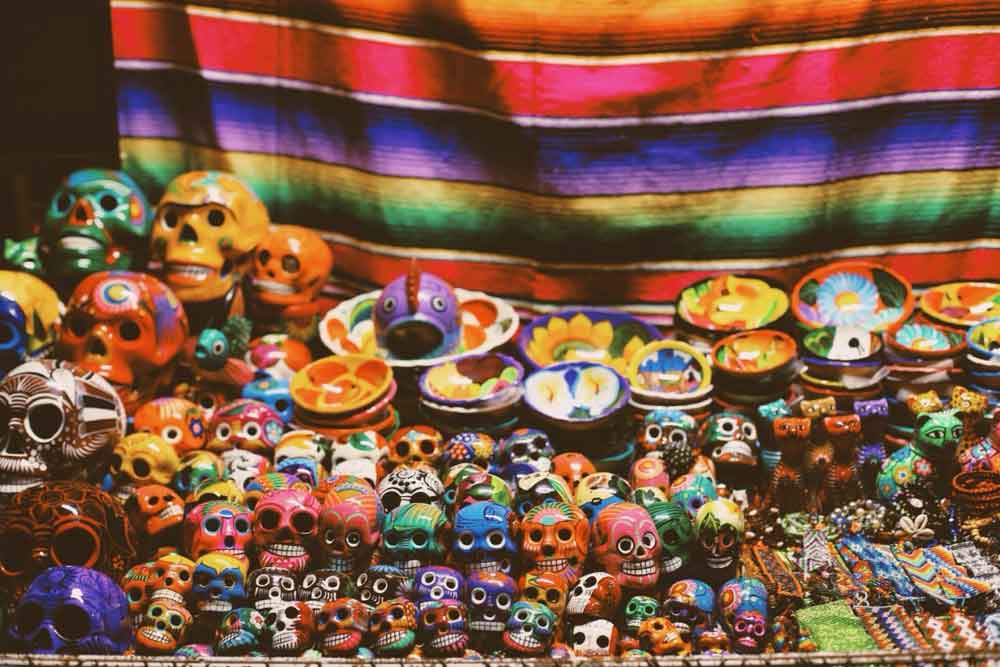There are some unique and interesting facts about Mexico and its culture. The Mexican people boast a rich tapestry of traditions and customs that reflect their deep-seated pride in their ancestral heritage. Across the diverse regions of the country, each community treasures its unique set of traditions and festivals, passed down through generations. From the bustling streets of Mexico City to the remote villages of the countryside, Mexico’s cultural landscape thrives with a vibrant array of customs that captivate visitors and locals alike, making it a captivating destination for cultural exploration.
Interesting facts about Mexico and its culture
The Mexican people boast a rich tapestry of traditions and customs that reflect their deep-seated pride in their ancestral heritage. Across the diverse regions of the country, each community treasures its unique set of traditions and festivals, passed down through generations. From the bustling streets of Mexico City to the remote villages of the countryside, Mexico’s cultural landscape thrives with a vibrant array of customs that captivate visitors and locals alike, making it a captivating destination for cultural exploration.
1. Indigenous Influence: A Cultural Mosaic
Mexico’s indigenous groups, including the Nahuas, Otomis, Mayas, Zapotecs, Tzeltales, and Tzotziles, play a pivotal role in shaping the country’s cultural identity. Their contributions to gastronomy, medicine, language, and traditions have left an indelible mark on Mexican culture, enriching it with a diverse tapestry of customs and practices. From the ancient rituals of the Mayan civilization to the intricate weaving techniques of the Zapotec people, the indigenous heritage of Mexico permeates every aspect of daily life, fostering a sense of pride and reverence for ancestral wisdom.
2. Festivals and Celebrations: A Cultural Kaleidoscope
Mexico’s calendar is brimming with traditional festivals and celebrations that offer a glimpse into the country’s vibrant cultural tapestry. Among these, the Day of the Dead, or Dia de los Muertos, stands as a quintessential example, blending pre-Hispanic mysticism with post-Conquest Catholicism. Held on November 2nd, this poignant commemoration coincides with the Catholic observance of All Souls’ Day. Indigenous communities honor their departed loved ones by creating elaborate home altars adorned with vibrant flowers, candles, and offerings, embodying the spirit of remembrance and celebration that defines Mexican culture.
3. Day of the Dead: A Fusion of Traditions
One of Mexico’s most iconic and culturally rich celebrations is the Day of the Dead, or Dia de los Muertos, a unique fusion of pre-Hispanic mysticism and Catholic traditions. Occurring on November 2nd, this vibrant festival serves as a poignant homage to departed loved ones, blending solemn remembrance with joyful festivity. Central to the Day of the Dead are the elaborately adorned altars, adorned with vibrant yellow and purple flowers, and laden with the deceased’s favorite foods and beverages.
Rooted in ancient beliefs, these altars symbolize the journey of the departed through spiritual purgatory, culminating in resurrection on the Night of the Dead, November 1st. Far from being a somber occasion, the Day of the Dead is a celebration of life and a playful nod to the inevitability of death, marked by colorful imagery and lively festivities.
4. Christmas in Mexico: A Unique Tradition
In Mexico, the observance of Christmas unfolds in a distinctive manner, distinct from Western customs. Rather than the focus on Santa Claus and gift-giving on Christmas Day, Mexican tradition centers around Three Kings’ Day, or Da de los Reyes, celebrated on January 6th. This holiday commemorates the visit of the Magi to the infant Jesus, bearing gifts of gold, frankincense, and myrrh. Children eagerly await this day to receive presents, marking the culmination of the holiday season. Additionally, Las Posadas, a reenactment of Mary and Joseph’s journey to Bethlehem, adds a cultural richness to Mexico’s Christmas celebrations, underscoring the nation’s deep-rooted religious and festive traditions.
5. Las Posadas: A Community Tradition
In Mexico, the festive season is imbued with a sense of community and tradition, exemplified by the cherished custom of Las Posadas. This reenactment of Mary and Joseph’s search for shelter in Bethlehem unfolds in neighborhoods across the country, with residents coming together to partake in the age-old ritual. Portrayed by members of the community, Mary and Joseph embark on their journey astride a donkey, knocking on doors in search of lodging.
Three times they are turned away, symbolizing the biblical narrative, before finally being welcomed into a home. Following this theatrical portrayal, neighbors gather to share in the warmth of pozole and Mexican hot chocolate, fostering bonds of camaraderie and goodwill. This heartwarming tradition, repeated in the days leading up to Christmas, serves as a reminder of the importance of hospitality and compassion in Mexican culture.
6. Independence Day: A Patriotic Commemoration
September 16th holds special significance in the hearts of Mexicans as the day of their nation’s independence. Marked by grand festivities and patriotic fervor, Mexico’s Independence Day commemorates the historic proclamation made by revolutionary priest Miguel Hidalgo on September 16, 1810, igniting the struggle for independence from Spanish colonial rule.
As night falls on September 15th, families gather in town squares across the country to witness the iconic grito, or “shout,” of independence, echoing the rallying cry of liberation. Led by the Mexican president and dignitaries nationwide, the crowd chants “Viva México!” thrice, reaffirming their enduring love and allegiance to their homeland. This annual tradition serves as a poignant reminder of Mexico’s rich history and the indomitable spirit of its people.
7. Vibrant Folk Traditions: The Jarabe Tapatio
Folk dance holds a cherished place in Mexican culture, serving as a vibrant expression of tradition and community. Among the most iconic dances is the Jarabe Tapatio, also known as the Mexican Hat Dance, renowned for its spirited choreography and romantic undertones. This lively dance pays homage to the beauty of romance, performed with grace and passion while adorned in traditional attire, including the iconic sombrero. As dancers twirl and stomp to the rhythm of lively mariachi music, the Jarabe Tapatio captivates audiences with its exuberant energy and timeless allure, embodying the spirit of Mexican heritage and celebration.
8. The Siesta: Embracing Tradition and Rest
Embedded within Mexico’s cultural fabric is the timeless custom of the siesta, a cherished respite from the hustle and bustle of daily life. Commonly observed in hot climates, the siesta is a brief afternoon nap that follows the mid-day meal, offering a moment of relaxation and rejuvenation. This age-old tradition reflects Mexico’s appreciation for leisure and balance, allowing individuals to recharge their energies and escape the heat of the day. Whether enjoyed in the comfort of one’s home or beneath the shade of a tree, the siesta embodies the essence of Mexican hospitality and well-being, fostering a sense of tranquility and harmony in everyday life.
9. Independence Day: A Patriotic Celebration
September 16th marks a momentous occasion in Mexico’s history as Independence Day, a national holiday that commemorates the country’s liberation from Spanish colonial rule in 1810. The festivities unfold with grandeur and fervor across Mexico, culminating in the iconic Cry of Independence, or “El Grito,” delivered in the historic Zocalo of Mexico City. Against a backdrop of fireworks, music, and dancing, the Cry of Independence resounds, echoing the courageous spirit of Mexico’s forefathers and the enduring legacy of freedom. As the nation unites in celebration, Mexico City emerges as the epicenter of this patriotic extravaganza, welcoming visitors from near and far to partake in the jubilant festivities and pay homage to the nation’s rich heritage.
10. Cultural Etiquette: The Art of Greetings
In Mexican culture, the exchange of greetings holds profound significance, serving as a reflection of respect, warmth, and camaraderie. Whether meeting for the first time or bidding farewell, ‘hellos’ and ‘goodbyes’ are rituals steeped in tradition and etiquette. Men typically greet each other with a firm handshake or an affectionate embrace, symbolizing friendship and mutual respect. Conversely, women often exchange a brief peck on the cheek, a gesture of affection and camaraderie that transcends mere formality. These customary greetings not only foster a sense of connection and belonging but also underscore the importance of interpersonal relationships in Mexican society.
11. Fiestas and Festivals: A Celebration of Culture
Festivals and fiestas are integral to the fabric of Mexican life, uniting communities in joyous celebration and cultural expression. From bustling cities to remote villages, every corner of Mexico pulsates with the rhythm of festivities, honoring patron saints, historical events, and cherished traditions. Each village boasts its patron saint, revered with annual festivities and vibrant processions that fill the streets with music, color, and revelry. Whether it’s a lively street parade or an intimate family gathering, fiestas serve as a testament to Mexico’s rich cultural heritage and spirit of communal unity.
12. Las Posadas: Commemorating Tradition and Faith
Las Posadas, celebrated in December, offers a poignant glimpse into Mexico’s rich religious heritage and festive customs. This holiday commemorates the journey of Mary and Joseph to Bethlehem, inviting communities to come together in prayer, song, and culinary delights. Amidst traditional cuisine and festive drinks, the custom of selecting a child as the “angel” adds a playful touch to the solemnity of the occasion.
Tasked with leading family members bearing Mary and Joseph figurines, the “angel” embodies the spirit of innocence and faith, guiding loved ones on a symbolic journey of spiritual renewal and devotion. Through Las Posadas, Mexicans reaffirm their faith and heritage, weaving together the threads of tradition and community in a tapestry of shared reverence and celebration.
13. Dia de los Muertos: A Vibrant Celebration of Life
From the traditional Pan de Muertos to intricately decorated sugar skulls, market booths abound with treats and trinkets symbolizing the festive spirit of the occasion. In communities across Mexico, graveside vigils and torch-lighting ceremonies evoke a sense of reverence and remembrance, while all-night gatherings honor the enduring bond between the living and the departed. Through Dia de los Muertos, Mexicans celebrate the circle of life with reverence, resilience, and unbridled joy, affirming the eternal connection between past, present, and future generations.
14. Embracing Diversity: Festival de Guelaguetza
The Festival de Guelaguetza, held in July, epitomizes Mexico’s rich tapestry of indigenous cultures and traditions. In the vibrant streets of Oaxaca, women adorned in traditional regional attire gracefully dance while balancing offerings on their heads, a captivating spectacle that pays homage to the region’s heritage. This colorful celebration showcases a kaleidoscope of traditional costumes, folk dances, and tantalizing local delicacies, inviting visitors to immerse themselves in the vibrant tapestry of Oaxacan culture. From the rhythmic beats of indigenous music to the aromatic flavors of authentic cuisine, the Festival de Guelaguetza offers a glimpse into the soul of Mexico, where tradition and community converge in a joyous celebration of shared heritage.

15. San Cristobal Fiesta: A Cultural Extravaganza
The Fiesta de San Cristobal, spanning from the 16th to the 25th of July, transforms the historic town of San Cristobal de las Casas into a bustling hub of color and revelry. Amidst the cobblestone streets and colonial architecture, fireworks light up the night sky, parades wind through the streets, and lively marimba bands fill the air with infectious rhythms.
This vibrant fiesta, steeped in Chiapas customs and traditions, embodies the spirit of celebration and community, inviting locals and visitors alike to partake in the festivities. From colorful processions to spirited dance performances, the San Cristobal Fiesta offers a dynamic showcase of Mexico’s cultural richness and diversity, uniting people in a shared celebration of heritage and camaraderie.
16. The Name Game: Los Estados Unidos Mexicanos
Mexico’s name holds a fascinating history, reflecting the country’s complex heritage and cultural evolution. While commonly known as Mexico, the full name of the country is Los Estados Unidos Mexicanos, meaning “The Mexican United States.” This designation pays homage to the diverse states and regions that comprise the nation, highlighting the unity and diversity inherent in Mexican identity.
Interestingly, Mexico City, the capital, was initially known simply as Mexico, while its precursor, Mexico-Tenochtitlan, bore witness to the country’s rich indigenous history before being reshaped by Spanish colonization. Through its name and its history, Mexico embodies a rich tapestry of cultures, languages, and traditions, showcasing the enduring spirit of resilience and unity that defines the Mexican people.
17. Pyramids of Wonder
Nestled within the heart of Mexico lies one of the world’s most awe-inspiring architectural marvels—the largest pyramid on Earth. Towering above the landscape with grandeur and majesty, this ancient wonder serves as a testament to Mexico’s rich history and cultural legacy. Serving as sacred sites for ancient civilizations, such as the Mayans and Aztecs, these pyramids continue to captivate visitors from around the globe, offering a glimpse into Mexico’s storied past and architectural ingenuity.
18. Language Diversity
Mexico’s cultural tapestry is woven from a myriad of languages, reflecting the country’s diverse heritage and indigenous roots. With an astonishing 69 different languages spoken across its vast expanse, Mexico stands as a beacon of linguistic diversity. From Spanish, the predominant language spoken by the majority of the population, to indigenous languages such as Nahuatl, Maya, and Zapotec, each dialect tells a story of resilience, tradition, and cultural identity. Through its linguistic mosaic, Mexico embraces the richness of its indigenous heritage, ensuring that its diverse voices are heard and celebrated.
19. Museum Capital
Mexico City, the pulsating heart of Mexico’s cultural scene, boasts a remarkable distinction—it is the second city in the world with the largest number of museums. With an unparalleled array of artistic treasures, historical artifacts, and cultural exhibitions, Mexico City’s museums offer a captivating journey through the annals of time. From the iconic National Museum of Anthropology to the vibrant Frida Kahlo Museum, these institutions serve as guardians of Mexico’s heritage, preserving its artistic legacy for generations to come. As a hub of creativity and innovation, Mexico City’s museums stand as shining beacons of cultural enlightenment, inviting visitors to explore the boundless depths of Mexican art, history, and
20. Meteor that Altered Earth’s History Strikes Mexico
In a cataclysmic event that reshaped the course of Earth’s history, a colossal meteor collided with the Yucatán Peninsula in Mexico, leading to the extinction of the dinosaurs and numerous other species. This extraordinary celestial collision, believed to have occurred approximately 66 million years ago, unleashed devastation on a global scale, altering the planet’s ecosystem and paving the way for the rise of mammals, including early human ancestors. How AI, ChatGPT maximizes earnings of many people in minutes
The impact crater, known as the Chicxulub crater, serves as a stark reminder of the Earth’s vulnerability to celestial forces and continues to fascinate scientists and enthusiasts alike, offering invaluable insights into the mysteries of our planet’s past and the dynamics of the universe.
21. Exploring Mexico’s Cultural and Historical Marvels
Mexico’s cultural tapestry is woven with threads of ancient civilizations, colonial legacies, and modern innovations, creating a mesmerizing mosaic of traditions, artistry, and heritage. Journey through time as you traverse the cobblestone streets of colonial towns, adorned with colorful facades and ornate churches, or wander amidst the remnants of grandiose Mayan and Aztec cities, where towering pyramids and intricate sculptures whisper tales of bygone eras. Motivation – Mind – Success – Thinking – Productivity – Happiness
Delve into Mexico’s vibrant markets, alive with the aroma of spices and the vibrant hues of indigenous textiles, or witness the spectacle of traditional festivals and rituals that celebrate the country’s diverse cultural heritage. Each corner of Mexico exudes a unique charm and allure, inviting visitors to embark on an immersive odyssey through the annals of history and culture.
22. Gastronomic Delights: Savoring Mexico’s Culinary Symphony
Embark on a culinary odyssey across Mexico’s gastronomic landscape, where each dish is a symphony of flavors, colors, and textures that tantalize the taste buds and ignite the senses. Indulge in the fiery heat of chili-infused salsas, the velvety richness of mole sauces, and the delicate sweetness of freshly made corn tortillas. Business – Money Making – Marketing – E-commerce
From street food stalls dishing out mouthwatering tacos and tamales to upscale restaurants showcasing innovative interpretations of traditional cuisine, Mexico’s culinary scene offers a myriad of delectable delights to satisfy every palate. Immerse yourself in the culinary traditions of Mexico, where age-old recipes are passed down through generations, and each meal is a celebration of heritage, community, and the joy of savoring life’s simple pleasures.
23. The Allure of Mexico’s Tourist Attractions
From the dawn of the nineteenth century, Mexico has beckoned foreign travelers with a tapestry of cultural marvels, spanning from vibrant festivals to the enchanting allure of colonial cities. Nature enthusiasts find solace in the embrace of its sprawling nature reserves, while sun-seekers revel in the pristine beauty of its beach resorts. The nation’s temperate climate serves as an inviting embrace, complementing its distinct cultural tapestry—a harmonious blend of European influences interwoven with the ancient legacies of Mesoamerican civilizations. This unique fusion acts as a magnetic force, drawing tourists from around the globe to explore its diverse landscapes and immerse themselves in its rich heritage. Health books, guides, exercises, habits, Diets, and more
24. Mexico’s Abundant Natural Wealth
Beyond its cultural splendors, Mexico stands adorned with a wealth of natural resources, serving as a veritable treasure trove for its economy. Beneath its soil lie vast reserves of oil, shimmering veins of silver, and veins of copper, each contributing to the nation’s economic vitality. Above ground, bountiful agricultural products flourish, ranging from succulent fruits to hearty grains. The nation’s economic landscape is further enriched by highly productive oil fields, fostering a thriving energy sector. Additionally, Mexico’s burgeoning manufacturing base stands as a testament to its industrial prowess, while robust trade relations with neighboring giants like the United States and Canada bolster its economic resilience. Fitness – Meditation – Diet – Weight Loss – Healthy Living – Yoga
25. The Perilous Plight of Mexico City’s Subsidence
Beneath the bustling streets of Mexico City lies a silent and ominous threat—the gradual sinking of the metropolis into the earth. As a consequence of extensive groundwater extraction and the city’s sheer weight, this phenomenon, known as subsidence, presents a sobering reality. With each passing year, Mexico City inches closer to the earth’s embrace, posing significant challenges to its infrastructure and inhabitants alike. As the ground beneath shifts and settles, buildings tilt, roads warp, and underground infrastructure strains under relentless pressure. This slow descent into the depths serves as a poignant reminder of the delicate balance between human progress and the unforgiving forces of nature. RPM 3.0 – 60% CONVERSION & Money for Affiliate Marketing
We believe you have enjoyed these interesting facts about Mexican culture!
More Interesting Articles
- 100 Cool Facts about Japan for Curious Learners
- 100 Interesting Facts About China to Know About
- 100 Venice, Italy Facts – Fun Facts about Venice
- 100 Top Interesting, Evergreen Facts about Nepal
- Largest Banks in the World – Big Banks with Reputation
- Top 100 Medical Colleges in the World
- The List of World’s Top 100 Universities
- 40 Interesting Facts about Beautiful Pokhara, Nepal
- List of Current United States Senators of the Congress
- The States in Alphabetical Order – Names of States in the USA
- 60 Interesting Facts About Morocco for Beginners
- 100 Top Interesting Facts About South Korea for Beginners
- 50 Interesting Cape Town South Africa Facts
- 30 Amazing Tokyo Tower Fun Facts for Learners
- 60 Fun Facts about Barcelona for Curious Minds
- 100 Interesting Facts About Rome for Avid Learners
- 100 Top Interesting Facts about Ghana for Everyone
- 20 Interesting Facts About Bandung, Indonesia
- 23 Interesting Facts About Nagoya Japan
- 18 Facts About National Palace Museum, Taiwan



